Back on Saturday 22nd March 2008 I had a rather varied day in London, meeting protesters cycling to Aldermaston on my way to photograph a march for freedom in Tibet, then going to a protest against the deportation of a gay man to Iran and finally to a pillow fight.
Bikes Not Bombs: London – Aldermaston
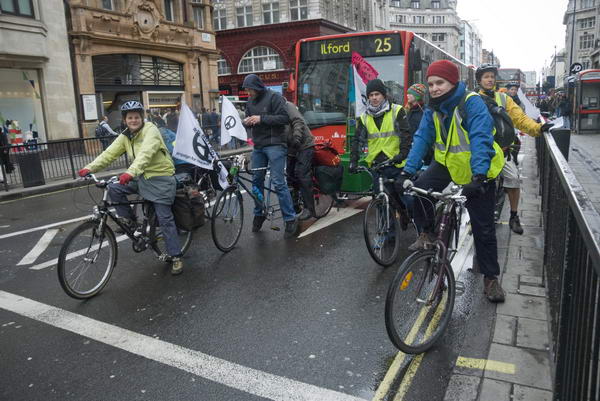
I was on foot and had just come out of Oxford Circus station when I saw the CND Bikes Not Bombs group of cyclists who had begun their ride in Trafalgar Square earlier and were on their way to ride to Aldermaston. Though when I took a few photographs as you can see from the bus they were cycling in exactly the wrong direction, east towards Ilford. Of course they weren’t lost, just trying to attract some attention to the protest, riding with a sound system along London’s busiest shopping street.
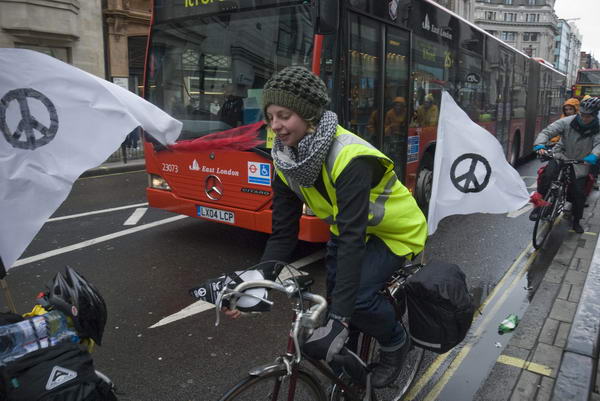
I’d thought briefly about taking part myself in the event, as I’d used a bike to get around since I was six, having graduated then from a first a pedal car and then a tricycle. I did own a car briefly when I was around 21, but soon realised it was impractical in cities, expensive, polluting and environmentally unsound and never made the same mistake again.
But for the reasons I listed on My London Diary – sloth, other events, lousy weather and a dislike of early rising – I didn’t join this official ride, though I did cycle on my own from Reading to Aldermaston and back on the following Monday to join the protesters there.
Bikes Not Bombs: London – Aldermaston
Support Tibet March
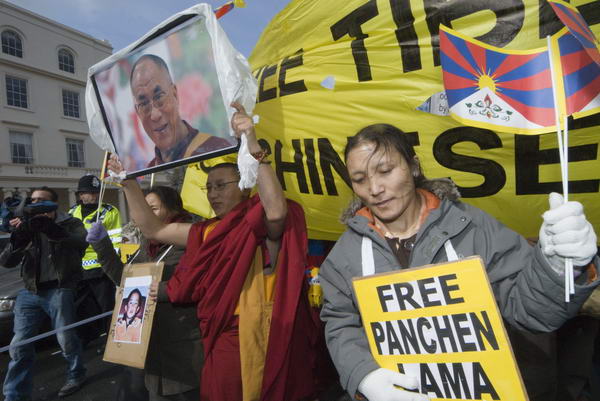
I was on my way to Park Crescent, a short walk north of the Chinese Embassy where Tibetans and supporters of freedom in Tibet were meeting to march through London on the 49th anniversary of the 1959 Tibetan uprising.
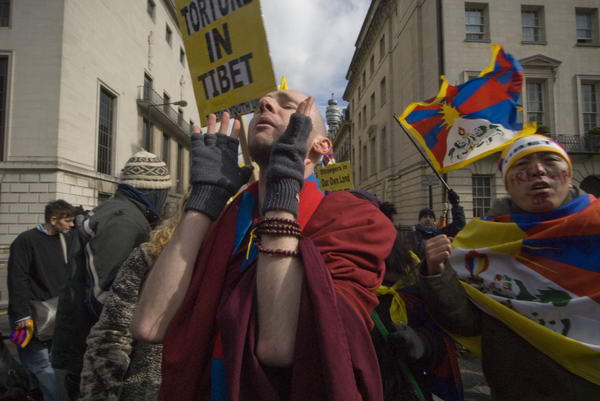
Tibet came under effective control of the Chinese government in 1951, when an agreement had been come to the status of Tibet within the recently established People’s Republic of China. In 1949 Tibetan protesters feared the Chinese were about to arrest the 14th Dalai Lama. Protests were at first peaceful but were brutally repressed by the People’s Liberation Army and there was heavy fighting which also involved Tibetan separatists who had been carrying out guerrilla warfare against Chinese forces.
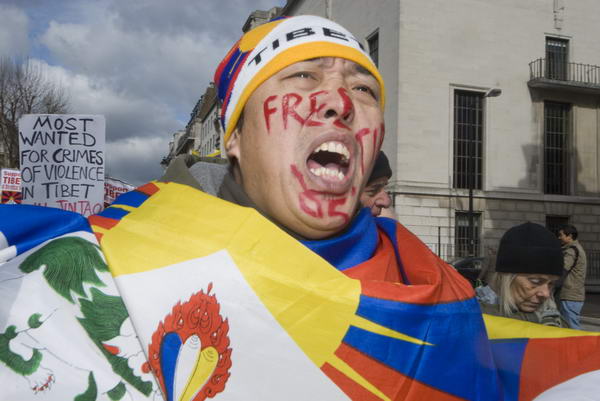
The Dalai Lama fled the country and set up an independent Tibetan government in India, where he still lives – and was awarded the Nobel Peace Prize in 1989. The Tibetan uprising had begun on 10th March 1959 and this day is celebrated each year as Tibetan Uprising Day and Women’s Uprising Day. Since 2009, following protests on 10th March 2008 in Lhasa, the Chinese-controlled authority in Tibet have celebrated the day they fully regained control, 28th March as the national anniversary of Serfs Emancipation Day.
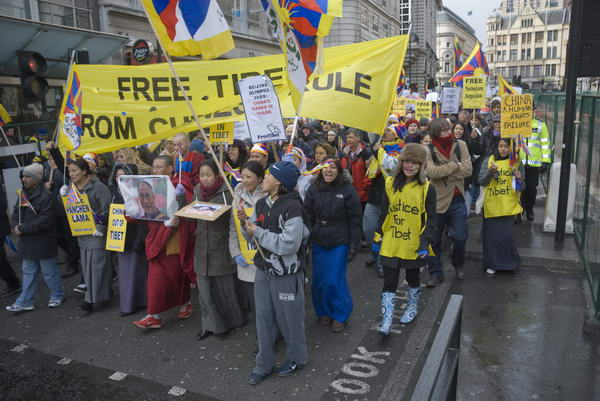
The Tibetan Independence Movement who organise annual protests calling for freedom for Tibet was originally funded and trained by the CIA, but this was withdrawn following Richard Nixon’s visit to China in 1972. And the Dalai Lama who had originally backed it, and who appears as a large photograph carried reverently in the marches, also withdrew support for the independence movement in the 1970s.
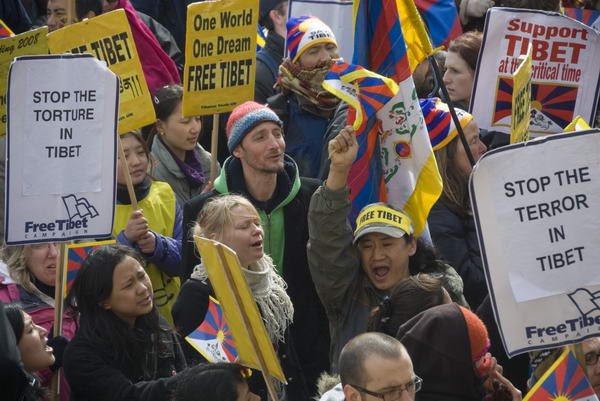
It is clear from reports by Amnesty International and others is that there are considerable human rights abuses in Tibet. The 2021 US State Department report listing includes “unlawful or arbitrary killings, including extrajudicial killings by the government; torture and cases of cruel, inhuman, and degrading treatment or punishment by the government; arbitrary arrest or detention; political prisoners; politically motivated reprisals against individuals located outside the country; serious problems with the independence of the judiciary; arbitrary or unlawful interference with privacy; serious restrictions on free expression and media, including censorship; serious restrictions on internet freedom including site blocking; substantial interference with the freedom of peaceful assembly and freedom of association; severe restrictions on religious freedom….”
Defend Mehdi Kazemi – Downing St
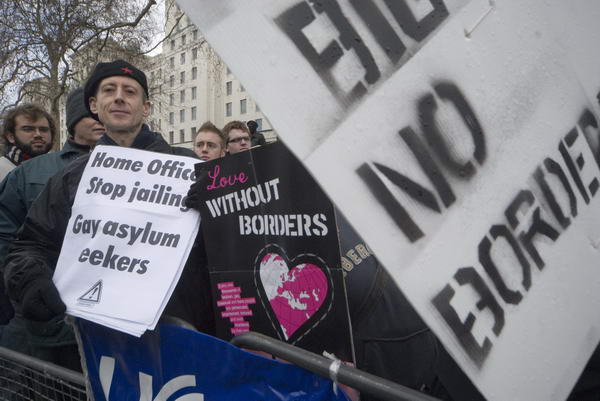
But of course human rights are not always respected in this country, and we currently have a government which is proposing to withdraw from some international human rights conventions and proposing racist anti-immigrant policies which are deliberately in breach of them.
Back in 2008, the Labour government was also riding roughshod over the human rights of some immigrants, setting up a system of large-scale detention of asylum seekers and treating individuals unfairly in a bid to outflank the Tories on cutting immigration through blatantly right-wing policies.
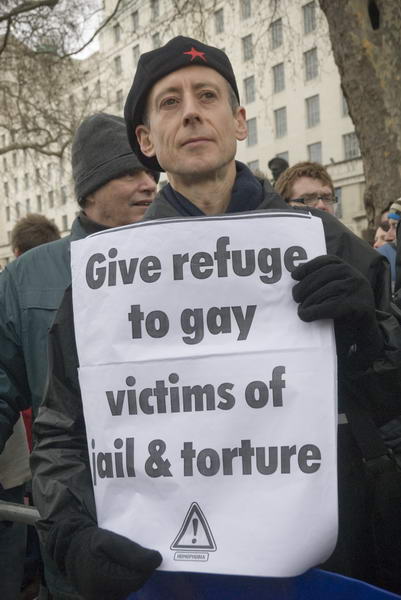
Mehdi Kazemi had come to the UK to study after having been involved in a consensual homosexual relationship in Iran. After his boyfriend was executed for this he became a wanted man in Iran and he went to the Netherlands to apply for political asylum.
This was refused as he had come from the UK and so was not allowed under the 2003 Dublin Agreement. The Uk had refused him permission to stay in Britain and were proposing to deport him to Iran where he would be tried and executed.
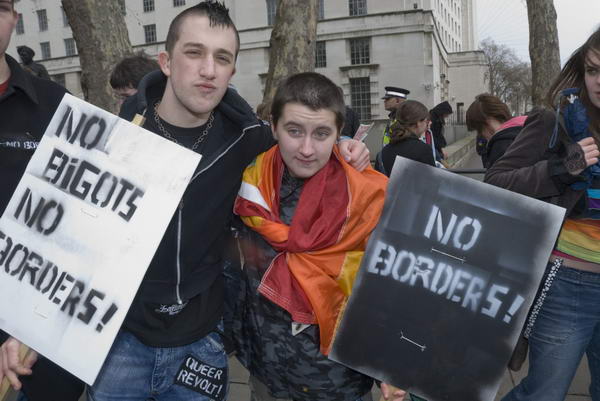
His case was just one of many where the Home Office were failing to recognise the need for refugees to claim asylum on the grounds of persecution because of their sexual orientation, and for failing to have accurate and up-to-date information on homophobic persecution in countries to which LGBT asylum seekers might be deported.
Support for Kazemi at this protest and by a number of MPs, MEPs and human rights activists did eventually result in the Home Office agreeing to review his case and he was given leave to remain here in May 2008.
Flash Mob Global Pillow Fight – Leicester Square
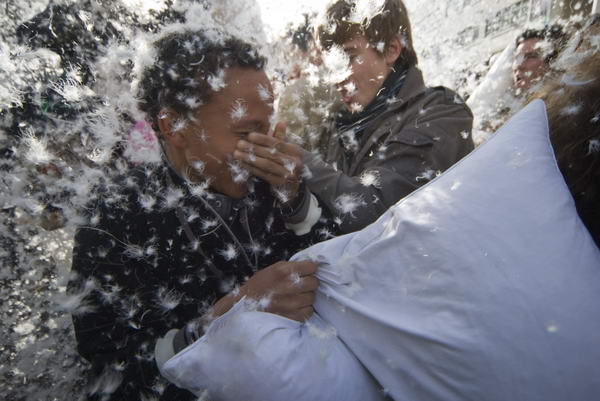
My day ended in very much lighter mood with a pillow fight in Leicester Square, one of many organised in capitals around the world due to kick off at 15.03PM.
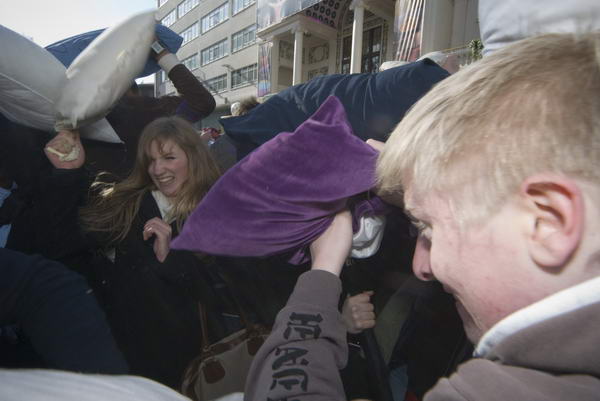
I commented: “Of course its a trivial, silly event, but the idea and the kind of organisation involved I think represents something new and exciting, a kind of ‘Demo 2.0’ which we will surely see more of in the future.”
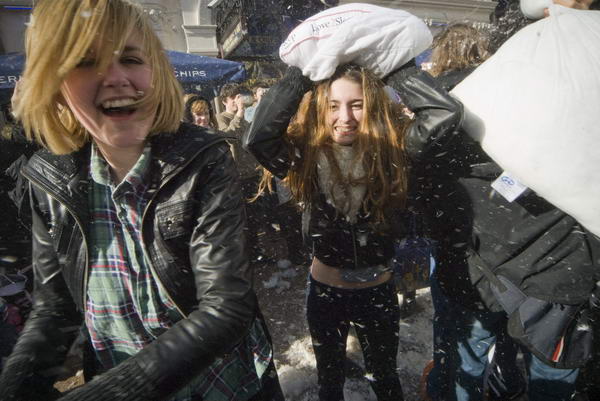
Perhaps this hasn’t had as much impact here in the UK as I had hoped, but I think may have been more important elsewhere in the world. To some extent it has been outgrown as Facebook, Twitter and other social media apps have become more important and even protests organised months and years in advance make use of them.
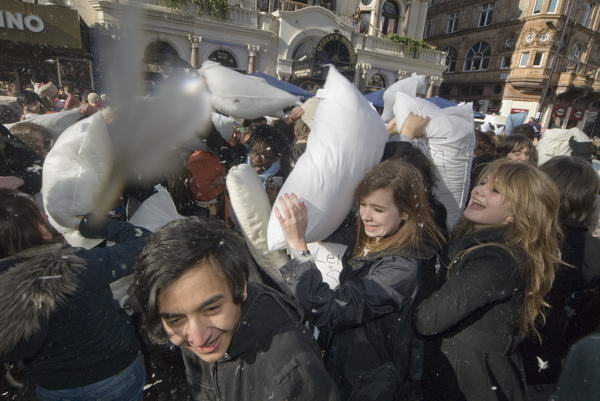
But it was interesting if rather tricky to photograph, and I got stuck in without a pillow and at some danger to my health, main not “from impact but suffocation when some pillows split open to fill the air with clouds of feathers and feather-dust. At times I wished I was wearing a mask to protect my lungs; keeping my mouth firmly closed and breathing though my nose only stopped the larger particles.“
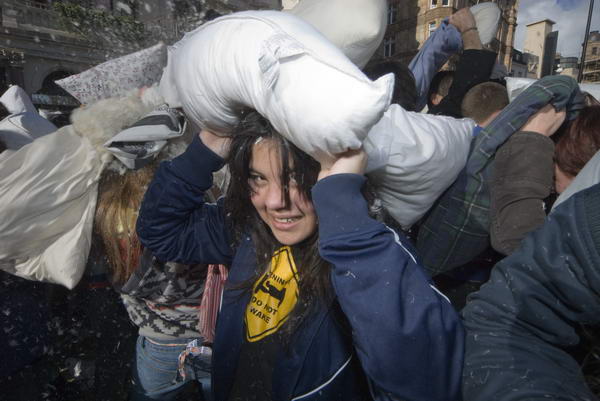
And I also found the the autofocus on my DSLR was too efficient at focusing on feathers in the air, and until I turned it off and went manual many of my pictures failed to be sharp for the people and pillows behind the screen of feathers.
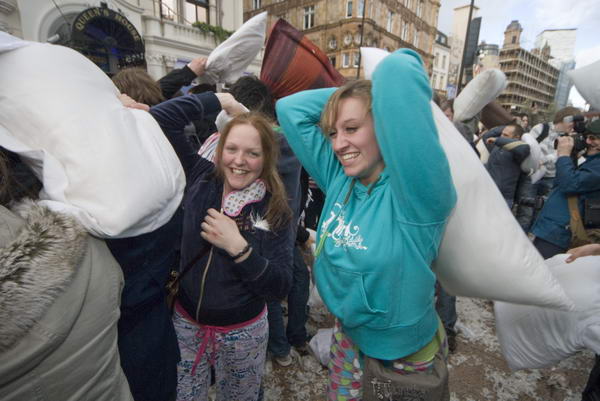
Later as the pixel count on DSLRs increased and full-frame cameras appeared I found it very useful to work in many situations using just the central ‘DX’ half-frame area of the viewfinder – which would have been very useful to let me see the people and pillows coming for me, but on this occasion I found “chaos really rules taking pictures becomes a press and hope situation. I think some of them do give an idea of what it was like to be there.